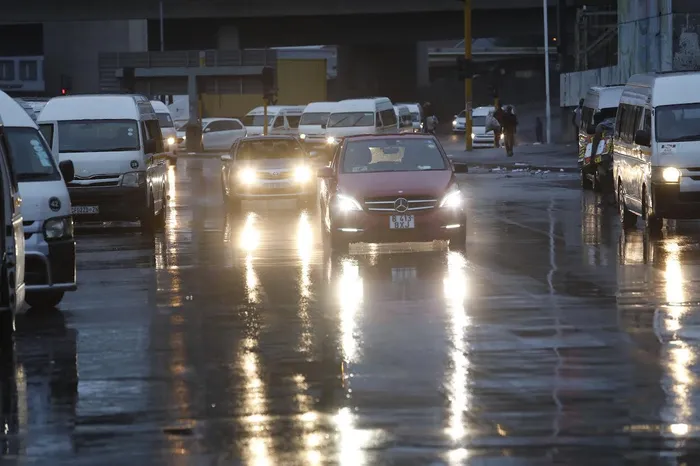CESA calls for action to improve maintenance, governance and technical capacity of SA’s roads

Fundamentally, road safety depends on the quality of the roads themselves, says the author.
Image: Doctor Ngcobo/Independent Newspapers
South Africa’s road infrastructure is the backbone of our economy and vital for the safety and mobility of our people. Yet there’s a persistent gap between the engineering expertise we have and the reality of managing and developing our roads effectively.
To build safer, more reliable transport systems, we must leverage engineering knowledge, enforce adherence to proper standards and boost institutional capacity across the public sector and change the narrow view that road infrastructure is just what you see in front of you when you drive.
Fundamentally, road safety depends on the quality of the roads themselves, but in the broader picture it should be viewed as a system that includes all the aspects of the infrastructure – fence to fence. Structural integrity, surface strength, proper geometric design, vegetation, signage, the painted lines and the records that are kept on these designs, all shape how safe a road can be.
Neglected vegetation can hide signs or block sightlines, creating dangerous blind spots. Cost-cutting often leads to skimping on crucial signage, road markings and quality materials – compromising safety for short-term savings. Our engineering community, therefore, pushes for strict standards that prioritise safety above all else.
However, while good infrastructure is essential, it’s only part of the picture. Driver behaviour plays a critical role that is often underestimated. If infrastructure is not used properly, it does not serve its purpose.
Poor driver behaviour, though, can only be adequately addressed through proper consequence management and law enforcement. Unfortunately, enforcement is frequently undermined by corruption and bribery, limiting its effectiveness as a safety measure. These often undermine efforts to keep roads safe by allowing reckless driving, speeding, and ignoring no-overtaking zones.
Both national and local governments must take a tougher stance on enforcement. Meaningful accountability and stronger collaboration between engineers, law enforcement and policymakers are vital to cut fatalities – especially during high-risk periods like holidays.
Maintenance, Record-Keeping and the Overlooked Essentials
A major challenge is the poor documentation of original road designs and ongoing maintenance by provincial and municipal authorities. Without clear records, roads degrade faster, raising risks and costs. We call for a national commitment to robust asset management systems that protect design integrity and enable efficient upkeep.
Another systemic issue, which has been ongoing for the last 30 years, is dwindling technical capacity within public bodies. Over these past three decades, the shift from insourcing to outsourcing has gradually increased an overreliance on private contractors, often without strong oversight or knowledge transfer.
While outsourcing was partly driven by efforts to reduce operational costs and internal staffing burdens, it swung too far without maintaining a healthy level of capacity within public sector entities. This trend has not only led to a loss of institutional memory, but has also undermined the ability of public agencies to retain and develop engineering expertise essential for long-term road planning and maintenance.
Adding to this, non-technical managers are sometimes placed in charge of technical portfolios, further weakening the strategic leadership required for infrastructure stewardship and reducing the effectiveness of long-term infrastructure planning.
To rectify this, we would advocate for institutional reforms, focusing on mentorship, professional development and leadership continuity, especially at senior levels, are crucial for turning policies into actionable, measurable results. Without this, policies remain paper promises instead of real frameworks for progress.
The Cost of Short-Term Thinking
South Africa has plenty of policies and legislation governing transport. However, as our engineering community frequently observes, the real challenge lies in execution. The implementation of these plans struggles due to limited resources, lack of accountability and frequent political leadership changes.Each new minister brings their own teams and priorities, disrupting long-term plans and continuity crucial for large-scale infrastructure projects. In my view, the director general of these departments should be a permanent feature with a specific competence in road infrastructure, management and maintenance. This revolving door effect contributes to fragmentation, lack of ownership and the shelving of sound policies before they can be realised.Even more so, mismatches between skills and roles plague the system. Policies often fail to materialize, as the individuals tasked with executing them lack technical competence or institutional grounding. Therefore, ensuring capable personnel with the relevant expertise is foundational to bridging the gap between policy intent and delivery.
Adopting accountability models with clear targets, monitors progress and establishes tangible consequences, could help build a culture of delivery and steady improvement.
South Africa’s roads deserve dedicated engineering, strategic governance and commitment. The engineering community stands ready to work with government, industry and communities to embed standards, build capacity and ensure infrastructure investments deliver safe, sustainable transport for all.

Chris Campbell, the CEO of Consulting Engineers South Africa
Image: Supplied
Consulting Engineers South Africa’s CEO Chris Campbell
** The views expressed here do not necessarily represent those of Independent Media or IOL.
BUSINESS REPORT